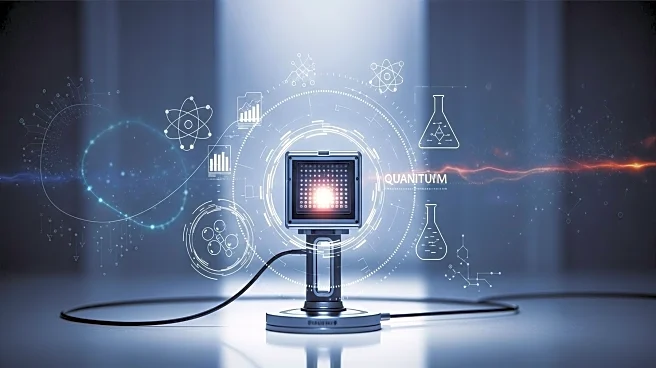What is the story about?
What's Happening?
Researchers at Washington University in St. Louis have developed quantum sensors capable of operating under extreme pressures, using boron nitride sheets. These sensors can withstand pressures over 30,000 times that of Earth's atmosphere, enabling precise quantum measurements. The innovation involves creating atomic-scale vacancies in boron nitride through neutron irradiation, which traps electrons sensitive to quantum environments. This advancement allows for detailed analysis of materials under high pressure, with applications in fields like geophysics and cosmology. The sensors' two-dimensional nature enhances sensitivity, contrasting with traditional diamond-based sensors.
Why It's Important?
The development of these quantum sensors marks a significant advancement in high-pressure measurement technologies. By enabling precise measurements under extreme conditions, these sensors can transform research in various scientific disciplines, including condensed matter physics and planetary studies. The ability to probe materials at such pressures could lead to breakthroughs in understanding geological phenomena and the properties of novel quantum materials. Additionally, the sensors' potential to study superconductivity under high pressure could resolve longstanding debates in the field, offering insights into achieving room-temperature superconductivity.
What's Next?
Future research will likely focus on applying these sensors to study geological specimens and explore their response to extreme compression, providing insights into seismic activities. The sensors may also be used to investigate the magnetic properties of quantum materials under pressure, potentially leading to new discoveries in material science. As the technology advances, collaborations between institutions may expand, integrating these sensors into broader scientific research and applications. The continued development of these sensors could also influence practical applications in materials testing and space exploration.
Beyond the Headlines
The interdisciplinary approach to developing these sensors highlights the importance of collaboration across scientific fields. The integration of quantum physics, material science, and high-pressure engineering exemplifies how multidisciplinary research can overcome complex challenges. This innovation not only advances fundamental research but also has the potential to impact applied sectors, such as mineralogy and space exploration. The sensors' ability to operate under extreme conditions may lead to new opportunities in studying planetary interiors and other high-pressure environments.
AI Generated Content
Do you find this article useful?















